OK, so yes, I have been known to be a bit impatient at times, guilty as charged.
I’m also a bit of a tinkerer and thanks to OpenROV builds have a very basic understanding of making things with acrylic, which can be a very dangerous combination.
On this occasion, my impatience and tinkering found itself focused on making a housing for one of the small consumer #360video cameras, the Samsung Gear360. Why did i choose this camera you ask? Mostly form factor and that it shoots near 4k, AND I have a nice template for Autopano that makes stitching in post easy as pie… Also for instant gratification, the samsung gear360 phone app offers in app stitching for a preview and immediate sharing.
So first up, what options are currently out there for small consumer 360 cameras:
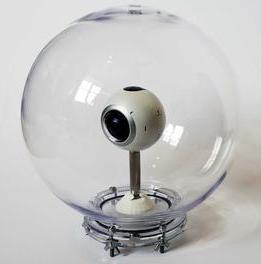 Thetabubble Looks good, totally functional, and can even put a pass through in the base for live streaming via USB via an active USB cable. Depth limits 4m and 10m are not ideal for some of the stuff I want to film, but a totally viable option.
Thetabubble Looks good, totally functional, and can even put a pass through in the base for live streaming via USB via an active USB cable. Depth limits 4m and 10m are not ideal for some of the stuff I want to film, but a totally viable option.
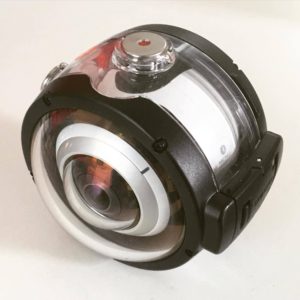 Samsung underwater housing: Looks totally posh, but I’m waiting to see if it can actually focus and stitch though those wee dome ports
Samsung underwater housing: Looks totally posh, but I’m waiting to see if it can actually focus and stitch though those wee dome ports
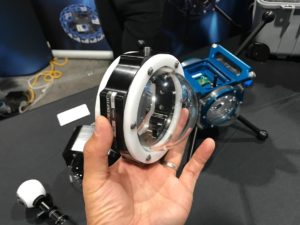
Photo credit: Eric Cheng
360Rize is has a nice looking prototype, very deep rated housing that could definitely be an option, but its still a couple months out. (photo courtesy of Eric Cheng, read his DEMA write up on 360video offerings here)
These all look like very viable options but they did not help my impatient nature.
OK, I apologize for what will likely be a very long post with bunches of pictures.
We shall start at the beginning… I have a v1.0 360heros H3SCUBAH6. It does nice work now that I’ve modified the go pros for closer focus. BUT, every diving video is quite a production from a post processing point of view, and with 6 cameras there is a bevy of stitch lines. The way I get better at shooting is to shoot more and compare what I read (recommendations) to my results and just shoot more. The post on a 6 camera rig that is not genlocked becomes a little prohibitive when it comes to fitting in a dive and shoot in the midst of my regular work week.
Enter the Samsung Gear360. Yeah, it is a consumer camera, it doesn’t have the resolution or image control of a handful of go pros or larger cameras (assuming an accessible cost housing option arrives for mirrorless) but it does the job, gets the shots and is fun to use. It allows for CONTENT to be CREATED. It is my belief that part of the success of the 360 medium will be a consistent stream of interesting, watchable content.
The Samsung Gear360 is also half the price (you can get a new one, unopened box off eBay for 250) of a single gopro. So if I’m gonna practice with something, why the heck not!
The hold up being, how do i get the critter underwater to the depths I want (the I-beams are at ~100′) when the only currently available theta bubble maxes at 30′. Since starting this process it sounds like Samsung is shipping their housing but i’m still waiting to hear re: the depth rating (as well as focus)
So what does this all mean? It means i’m gonna get all crafty like and try to make my own 🙂
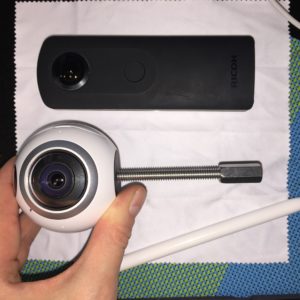
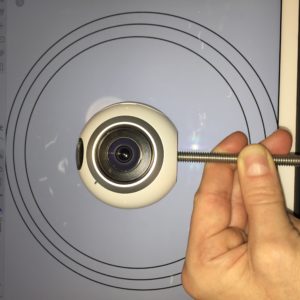

First things first, get on Amazon and search for dome ports. There are a ton, and I didn’t use any real logic to decide one over the other. I selected the ‘replacement dome cover‘ for Telesin Gopro surf housing. That housing has a depth rating of 100’ (which i assume is based on the flat portions of the system) so that gets me to a starting point. None of the others had any rating listed or enough data for me to calculate it without digging excessively, and for $15 bucks it seems worth a try.
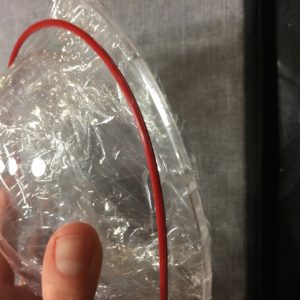
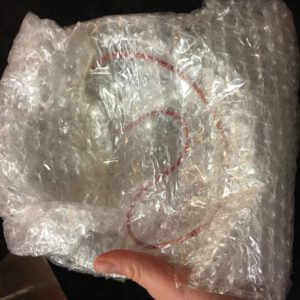
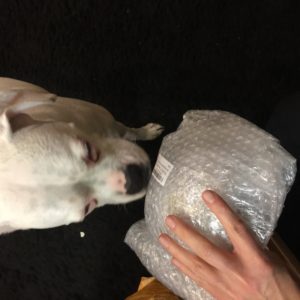
Dome port acquired, now its time to figure out a) if they will be the right size to be hidden in the stitch, and b) how far apart they can be. In this image you can see the edges disappear when in proper position.
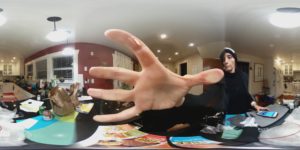
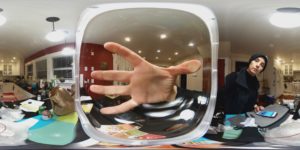
Next up is a trip to TAP plastic to see what kind of material i can find for a central interface disk.

Along with 3 9″ X 1/4″ ‘cake rounds’, I picked up acrylic cement, acrylic drills (for bolt and pilot holes) and an appropriate saber saw blade for cutting the stuff.
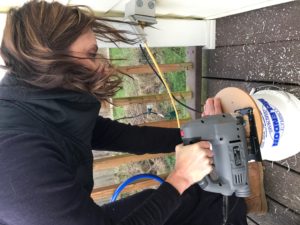
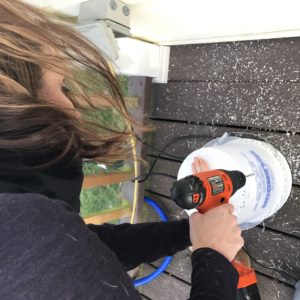
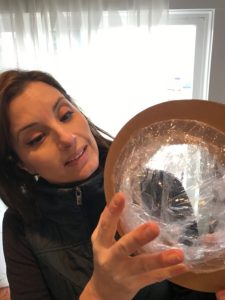
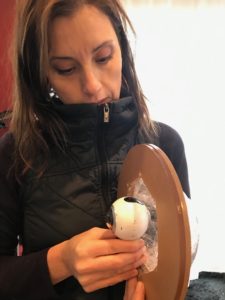
Central disks cut out individually, now it’s time to glue them all together, make a gasket and assemble the parts!
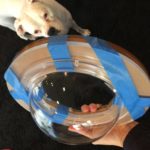
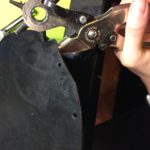
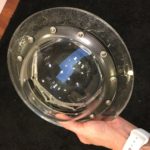
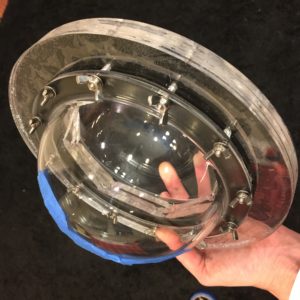
This has gotten really long so I will follow up with pressure testing in another post.
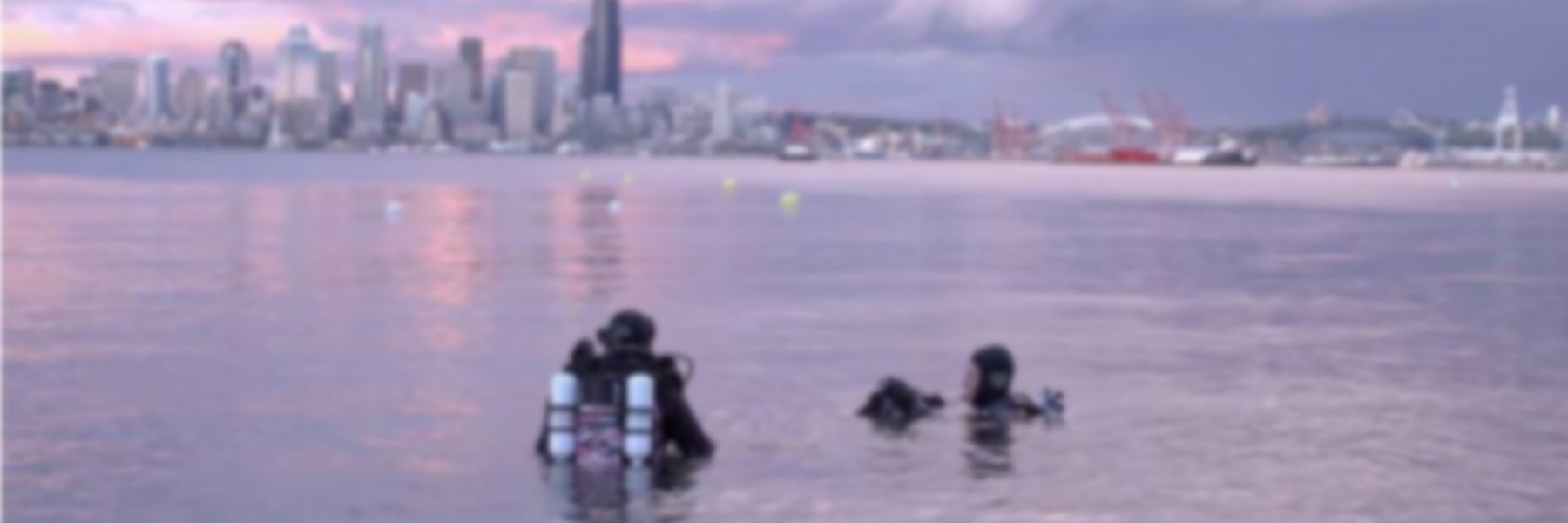
6 comments for “Samsung Gear360 Prototype Underwater Housing”